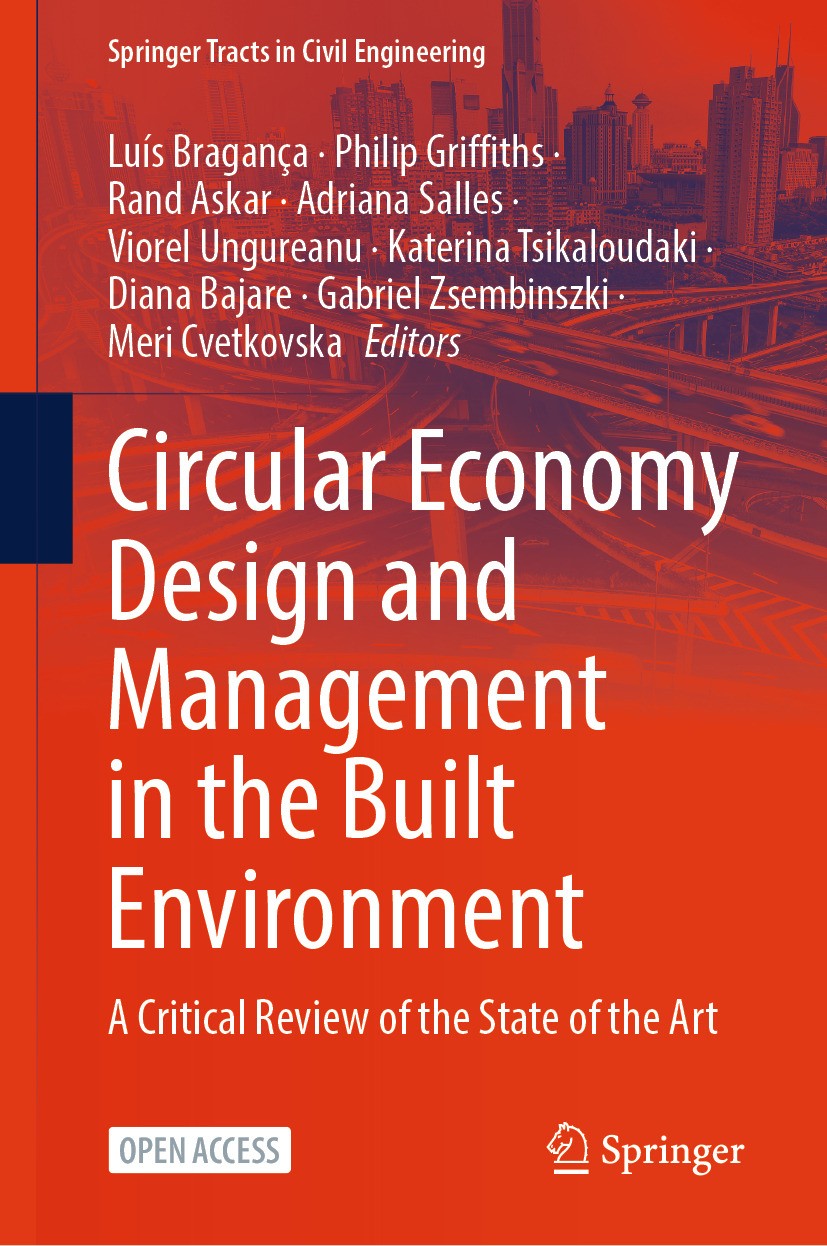| 書(shū)目名稱(chēng) | Circular Economy Design and Management in the Built Environment | | 副標(biāo)題 | A Critical Review of | | 編輯 | Luís Bragan?a,Philip Griffiths,Meri Cvetkovska | | 視頻video | http://file.papertrans.cn/243/242126/242126.mp4 | | 概述 | This book is open access, which means that you have free and unlimited access.Brings together scholars with different backgrounds and professionals.Provides cutting-edge information on circular econom | | 叢書(shū)名稱(chēng) | Springer Tracts in Civil Engineering | | 圖書(shū)封面 |  | | 描述 | .This open access book offers a comprehensive exploration of Circular Economy Design and Management within the Built Environment, presenting a critical review of the current state of the art. Going through multi-level approaches from material usage to urban planning, it meticulously examines strategies for circular building design, criteria, and indicators for circularity. Additionally, it explores practical tools and frameworks, as well as roles and relationships of stakeholders?along the entire value chain. Through insightful case studies and critical analysis, readers gain a deep understanding of circularity principles and applications, circularity management models and feedback systems, sustainable practices, and the integration of circularity into technological advancements and digital tools such as BIM. The importance of this book lies in addressing pressing challenges in contemporary architecture and construction, providing a roadmap for sustainable, circular solutions. It tackles the critical need to transition from linear to circular practices, emphasising?resource efficiency, waste reduction, and the longevity of structures. By offering practical insights and highlighting | | 出版日期 | Conference proceedings‘‘‘‘‘‘‘‘ 2025 | | 關(guān)鍵詞 | Open Access; Sustainable Development; Circular Economy; Built Environment; BIM; circular building design; | | 版次 | 1 | | doi | https://doi.org/10.1007/978-3-031-73490-8 | | isbn_softcover | 978-3-031-73492-2 | | isbn_ebook | 978-3-031-73490-8Series ISSN 2366-259X Series E-ISSN 2366-2603 | | issn_series | 2366-259X | | copyright | The Editor(s) (if applicable) and The Author(s) 2025 |
The information of publication is updating

|
|
 |Archiver|手機(jī)版|小黑屋|
派博傳思國(guó)際
( 京公網(wǎng)安備110108008328)
GMT+8, 2025-10-13 06:34
|Archiver|手機(jī)版|小黑屋|
派博傳思國(guó)際
( 京公網(wǎng)安備110108008328)
GMT+8, 2025-10-13 06:34


